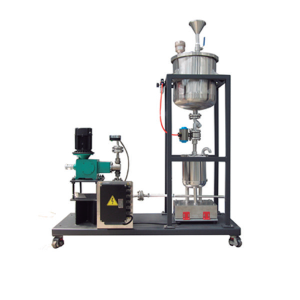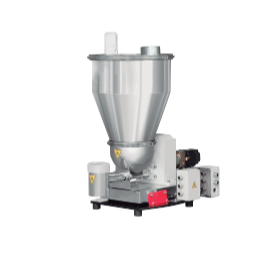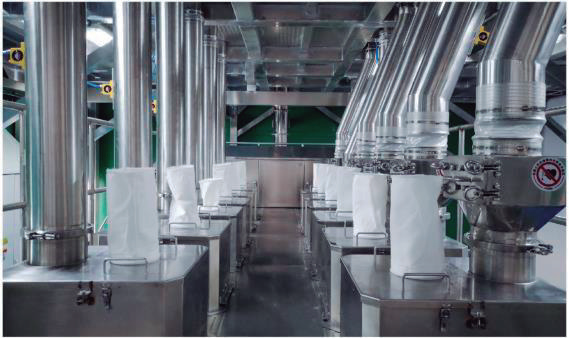How does the gravimetric feeder for extrusion complete the feeding process?
There are many types of gravimetric feeder for extrusion, including single-screw gravimetric feeders, twin-screw gravimetric feeders, and liquid gravimetric feeders.



The feeding process can be divided into three steps:
①. When the gravimetric feeder is working, the material in its weighing hopper will gradually decrease with the operation of the machine. When the material reduces to the set weight, the feeding device will automatically start to replenish the material. At this time, the gravimetric feeder will work in a fixed-speed mode. When the material increases to the set weight, it stops feeding, and the equipment automatically switches to the weightless mode.

②. The weighing sensor of the gravimetric feeder is linked with the weighing controller, and each item of data collected will be transmitted to the controller, and then the controller will perform calculations, and the calculation results will appear on the display screen. Through the data displayed on the display screen of the gravimetric feeder, we can not only view and monitor various data intuitively, but also control the working speed of the gravimetric feeder in time.

③. During the precise discharging process of the gravimetric feeder, the control system will collect data at a high speed and can calculate the reduced mass within a certain period to determine the speed and accuracy of the gravimetric feeder discharging.
What are the requirements of the gravimetric feeder for materials?
①. Gravimetric feeders have very high requirements for measurement accuracy, so the device composition of the equipment is designed for high precision. For example, during the entire operation process, the system is sealed, on the one hand, to ensure high precision, and on the other hand, to prevent the material from polluting the environment, these measures are all related to the material. The gravimetric feeder is suitable for powdery or granular materials and liquid materials. Such materials have some features like easy to scatter, easy to stick, easy to adsorb, easy to volatilize, etc. Therefore, more attention should be paid to the process to meet different requirements.



②. In addition, for some chemical enterprises with special requirements, the loss-in-weight system also needs to have explosion-proof settings, which can meet the requirements of plant construction and national safety management.
③. The measurement of the gravimetric feeder is a combination of static measurement and dynamic detection. During use, there will be a series of parameters and time settings. In actual production, when there is a possible out-of-tolerance situation, an alarm function is set in the gravimetric feeder, which can effectively prevent the occurrence of problems.

Disclaimer: (part of) the data, charts or other content in this article are from the Internet or other publicly published materials, and are only for readers’ reference, communication, and learning, and do not involve any commercial behavior or purpose. The copyright belongs to the original author and source. If the copyright owner believes that this article is suspected of infringement or other problems, please contact us and deal with it in a timely manner.

